Wabi-Sabi Is the New Hygge—and It Will Make Your Home Calm
The Japanese art of celebrating the perfectly imperfect offers a thoughtful, understated approach to design. Here, some inspiring ways to use it in your own space from the book Wabi-Sabi Welcome.
By Julie Pointer Adams
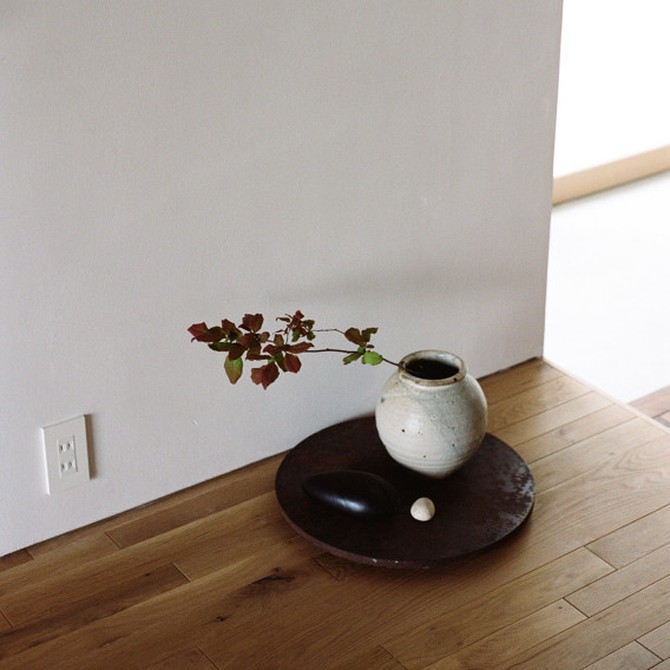
Photo: Excerpted from Wabi-Sabi Welcome by Julie Pointer Adams (Artisan Books). Copyright © 2017. Photographs by Julie Pointer Adams and Ryan J. Adams.
The concept of wabi-sabi is deeply rooted in Japan, though you won't find the term in the dictionary there, and even many Japanese people find it very difficult to describe.
The idea developed when two separate words, wabi and sabi, were joined to convey a certain look, feeling, and world perspective. Wabi means something like simplicity, humility, and living in tune with nature; it describes someone who is content with little and makes the most of whatever he or she has, always moving toward having less. Sabi, on the other hand, refers to what happens with the passage of time; it's about transience and the beauty and authenticity of age. Practicing sabi is learning to accept the natural cycle of growth and death, as well as embracing the imperfections that come with this progression. Together, wabi and sabi form a feeling that finds harmony and serenity in what is uncomplicated, unassuming, mysterious, and fleeting.
It's hard to get a feel for wabi-sabi if you've never encountered it before, but it should be noted that this aesthetic isn't junky, messy, or shoddy. It's also not shabby chic—you won't find new items intentionally distressed in order to look antique. Instead, the beauty of wabi-sabi appears when age and time are allowed to take their intended course. In my own process of moving away from perfect and toward perfectly imperfect, I've discovered that the ideas explored ahead help make my daily life feel simpler, more thoughtful, and more carefree. This is because at its core wabi-sabi teaches us to cling to what's essential, and to forget the rest. It also helps us to reexamine what "essential" really means.
The following are some basic principles from across the globe where I've experienced facets of wabi-sabi. Hopefully you will find, as I have, that bringing this way of being into your home inspires a deep sigh of relief.
The concept of wabi-sabi is deeply rooted in Japan, though you won't find the term in the dictionary there, and even many Japanese people find it very difficult to describe.
The idea developed when two separate words, wabi and sabi, were joined to convey a certain look, feeling, and world perspective. Wabi means something like simplicity, humility, and living in tune with nature; it describes someone who is content with little and makes the most of whatever he or she has, always moving toward having less. Sabi, on the other hand, refers to what happens with the passage of time; it's about transience and the beauty and authenticity of age. Practicing sabi is learning to accept the natural cycle of growth and death, as well as embracing the imperfections that come with this progression. Together, wabi and sabi form a feeling that finds harmony and serenity in what is uncomplicated, unassuming, mysterious, and fleeting.
It's hard to get a feel for wabi-sabi if you've never encountered it before, but it should be noted that this aesthetic isn't junky, messy, or shoddy. It's also not shabby chic—you won't find new items intentionally distressed in order to look antique. Instead, the beauty of wabi-sabi appears when age and time are allowed to take their intended course. In my own process of moving away from perfect and toward perfectly imperfect, I've discovered that the ideas explored ahead help make my daily life feel simpler, more thoughtful, and more carefree. This is because at its core wabi-sabi teaches us to cling to what's essential, and to forget the rest. It also helps us to reexamine what "essential" really means.
The following are some basic principles from across the globe where I've experienced facets of wabi-sabi. Hopefully you will find, as I have, that bringing this way of being into your home inspires a deep sigh of relief.
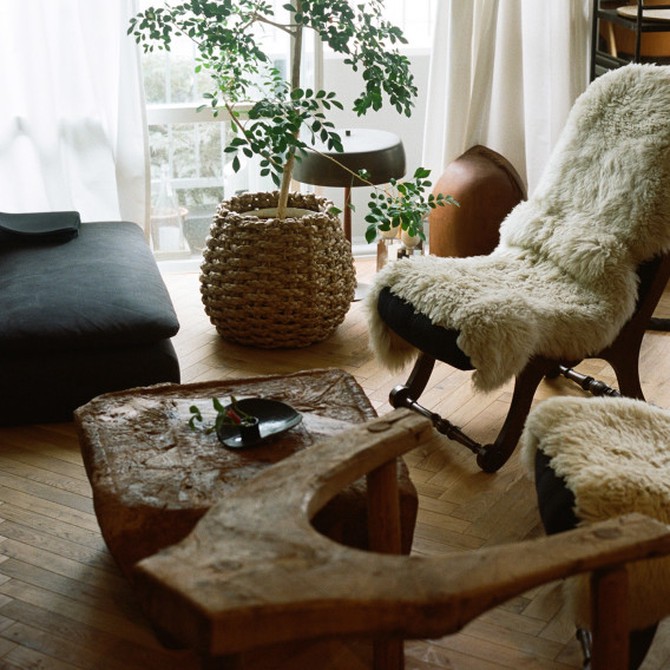
Photo: Excerpted from Wabi-Sabi Welcome by Julie Pointer Adams (Artisan Books). Copyright © 2017. Photographs by Julie Pointer Adams and Ryan J. Adams.
1. Celebrate Humble Materials
Material choices are involved on almost every level in our homes, and wabi-sabi inspires us to be selective with every decision. It favors having fewer but longer-lasting and higher-quality possessions; items that get better with age and can be somewhat easily repaired. Such things are often made from what I consider to be humble materials because they're raw and natural, requiring little processing before they're put to use. Think wood, wool, clay, rough paper, bamboo, flax or linen, leather, stone, woven grass, and iron—all subject to wear, nicks, tears, cracks, and rust. Unfortunately, items made from "humble" materials are, ironically, often the most expensive, because man-made materials are commonly so much cheaper to produce. And because most mass-produced objects are designed to fall apart or stop working after a fairly short time, we have to buy them again and again. Over time, they end up costing us more than if we'd bought a better-quality item in the first place.
1. Celebrate Humble Materials
Material choices are involved on almost every level in our homes, and wabi-sabi inspires us to be selective with every decision. It favors having fewer but longer-lasting and higher-quality possessions; items that get better with age and can be somewhat easily repaired. Such things are often made from what I consider to be humble materials because they're raw and natural, requiring little processing before they're put to use. Think wood, wool, clay, rough paper, bamboo, flax or linen, leather, stone, woven grass, and iron—all subject to wear, nicks, tears, cracks, and rust. Unfortunately, items made from "humble" materials are, ironically, often the most expensive, because man-made materials are commonly so much cheaper to produce. And because most mass-produced objects are designed to fall apart or stop working after a fairly short time, we have to buy them again and again. Over time, they end up costing us more than if we'd bought a better-quality item in the first place.
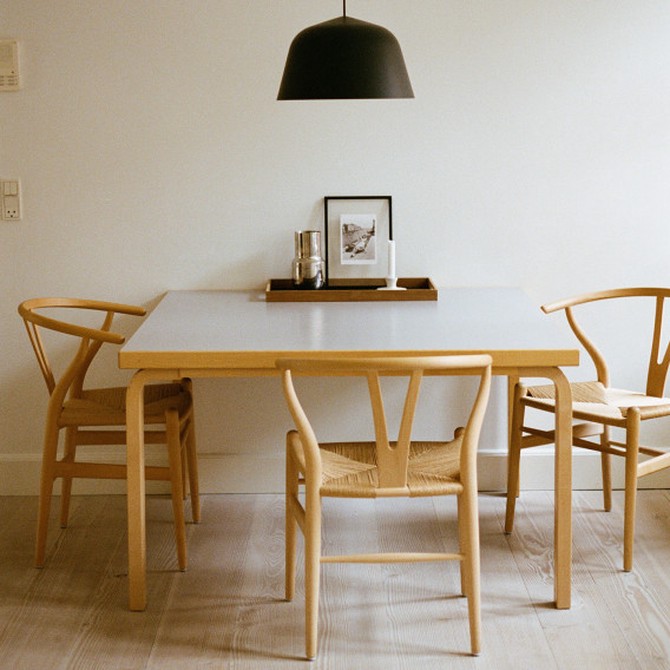
Photo: alvarez/istock
Photo: Excerpted from Wabi-Sabi Welcome by Julie Pointer Adams (Artisan Books). Copyright © 2017. Photographs by Julie Pointer Adams and Ryan J. Adams.
2. Clear Clutter
While certain décor can create a pleasant diversion, clutter detracts from whatever calm our homes provide. Your version of clutter may be piles of old catalogs, trinkets you no longer want, remote controls that don't work, an attic stuffed with "just in case" items, boxes of projects saved for later... you get the idea. Even if the offending objects aren't visible, they create a mental and physical block to living simply. The ongoing goal of wabi-sabi mind-set is to become increasingly unencumbered, whether that means donating clothes you haven't worn in years or clearing the emotional clutter of nostalgic items it's time to let go of. The ultimate purpose of decluttering is to make our homes as comforting and carefree as possible, for both ourselves and whomever we entertain.
2. Clear Clutter
While certain décor can create a pleasant diversion, clutter detracts from whatever calm our homes provide. Your version of clutter may be piles of old catalogs, trinkets you no longer want, remote controls that don't work, an attic stuffed with "just in case" items, boxes of projects saved for later... you get the idea. Even if the offending objects aren't visible, they create a mental and physical block to living simply. The ongoing goal of wabi-sabi mind-set is to become increasingly unencumbered, whether that means donating clothes you haven't worn in years or clearing the emotional clutter of nostalgic items it's time to let go of. The ultimate purpose of decluttering is to make our homes as comforting and carefree as possible, for both ourselves and whomever we entertain.
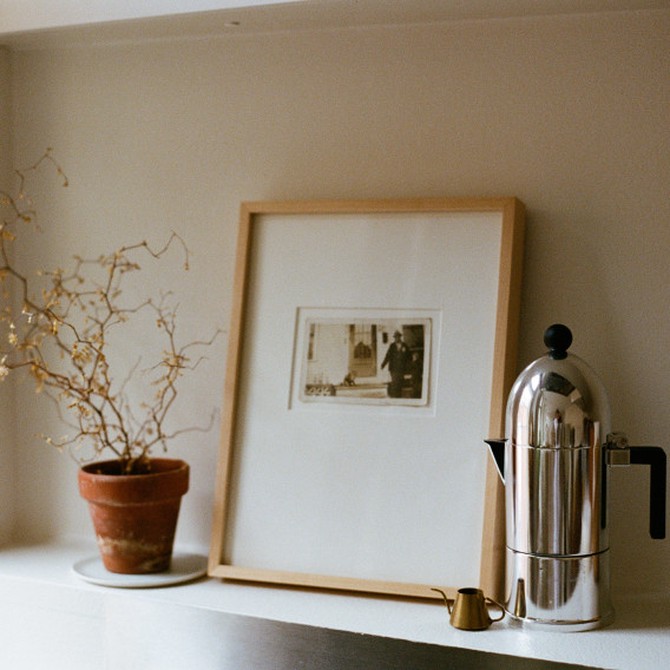
Photo: Excerpted from Wabi-Sabi Welcome by Julie Pointer Adams (Artisan Books). Copyright © 2017. Photographs by Julie Pointer Adams and Ryan J. Adams.
3. Collect, Then Curate
"Pare down the essence, but don't remove the poetry." This lovely motto comes from Leonard Koren's book Wabi-Sabi for Artists, Designers, Poets & Philosophers, and to me it sums up the Danish philosophy of seeking simplicity without sacrificing beauty. Our homes should inspire and rejuvenate us, but if every nook and cranny is crammed with belongings, there's little space left for the imagination or for relaxation. The excitement of collecting should (ideally, at least) be balanced by a willingness to edit and refine, since having fewer possessions makes each one more cherished—and in my eyes, that's where the "poetry" part comes in.
3. Collect, Then Curate
"Pare down the essence, but don't remove the poetry." This lovely motto comes from Leonard Koren's book Wabi-Sabi for Artists, Designers, Poets & Philosophers, and to me it sums up the Danish philosophy of seeking simplicity without sacrificing beauty. Our homes should inspire and rejuvenate us, but if every nook and cranny is crammed with belongings, there's little space left for the imagination or for relaxation. The excitement of collecting should (ideally, at least) be balanced by a willingness to edit and refine, since having fewer possessions makes each one more cherished—and in my eyes, that's where the "poetry" part comes in.
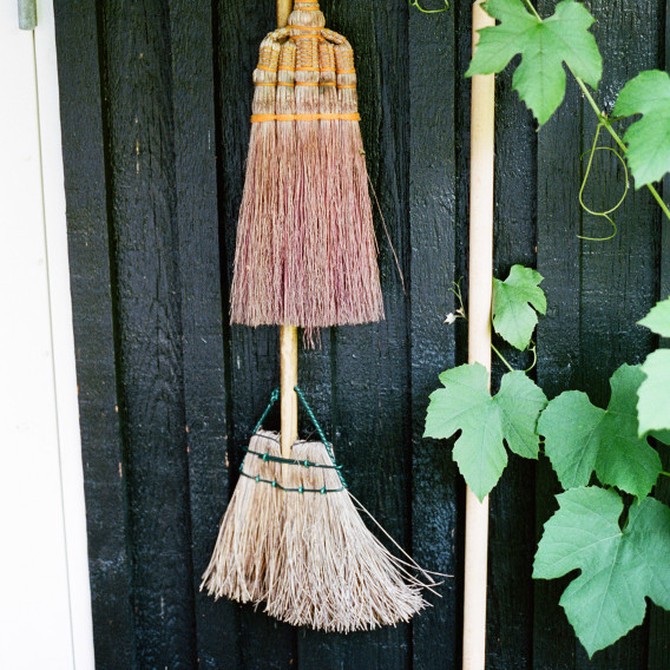
Photo: Excerpted from Wabi-Sabi Welcome by Julie Pointer Adams (Artisan Books). Copyright © 2017. Photographs by Julie Pointer Adams and Ryan J. Adams.
4. Let Beauty and Utility Overlap
Being beautiful should go perfectly hand in hand with being useful; just as a nice appearance shouldn't be more important than functionality, an object with a clear purpose doesn't have to be unsightly, either. Wabi-sabi promotes a resourceful approach by encouraging us to live with useful things we love and make home life function with as few things as possible. Investing in beautiful utilitarian objects simplifies our spaces because we end up needing fewer things to help us and make us happy.
4. Let Beauty and Utility Overlap
Being beautiful should go perfectly hand in hand with being useful; just as a nice appearance shouldn't be more important than functionality, an object with a clear purpose doesn't have to be unsightly, either. Wabi-sabi promotes a resourceful approach by encouraging us to live with useful things we love and make home life function with as few things as possible. Investing in beautiful utilitarian objects simplifies our spaces because we end up needing fewer things to help us and make us happy.
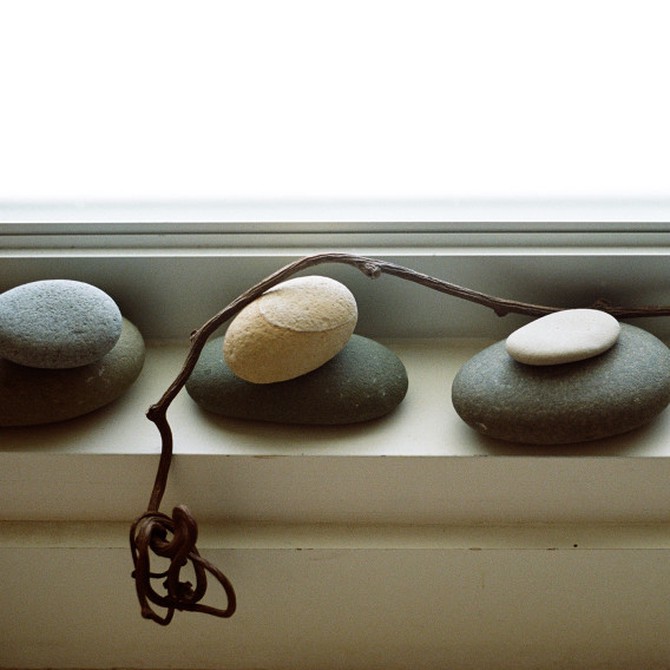
Photo: Excerpted from Wabi-Sabi Welcome by Julie Pointer Adams (Artisan Books). Copyright © 2017. Photographs by Julie Pointer Adams and Ryan J. Adams.
5. Introduce Nature to Create Calm
Natural beauty abounds in California. The state boasts the Pacific coastline, cacti-filled deserts, the Sierra Nevada, and countless other wonders. Each of these landscapes inspires a sense of serenity and awe through muted colors, vast expanses, and airy openness. I love stepping into homes that echo these same attributes. What is it about these spaces that gives me a sense of contentment? Well, it's many things; chief among them is the careful use of color drawn from tones found only in the natural world. Wabi-sabi manifests in heavier shades, like the dark grays, blues, greens, and rusts found in the sea and in trees like olive and sequoia, and in lighter hues that stick to the realm of muted pastels, like you might see on the desert floor, in beach grasses, or in the bark of a eucalyptus tree.
5. Introduce Nature to Create Calm
Natural beauty abounds in California. The state boasts the Pacific coastline, cacti-filled deserts, the Sierra Nevada, and countless other wonders. Each of these landscapes inspires a sense of serenity and awe through muted colors, vast expanses, and airy openness. I love stepping into homes that echo these same attributes. What is it about these spaces that gives me a sense of contentment? Well, it's many things; chief among them is the careful use of color drawn from tones found only in the natural world. Wabi-sabi manifests in heavier shades, like the dark grays, blues, greens, and rusts found in the sea and in trees like olive and sequoia, and in lighter hues that stick to the realm of muted pastels, like you might see on the desert floor, in beach grasses, or in the bark of a eucalyptus tree.
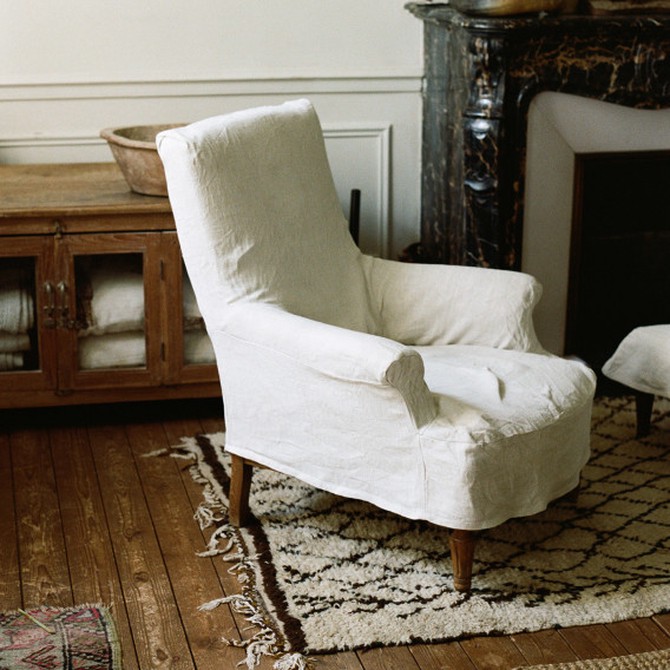
Photo: Excerpted from Wabi-Sabi Welcome by Julie Pointer Adams (Artisan Books). Copyright © 2017. Photographs by Julie Pointer Adams and Ryan J. Adams.
6. Showcase the Wrinkled Linens
Perhaps what I love most about a French sensibility is that it's incredibly relaxed, finding loveliness in nonuniform, naturally imperfect items and places. Embracing this more easy going aesthetic allows us to have a little more fun, whether that means using mismatched stoneware or glassware, setting the table with rumpled linen napkins, or decorating the house with big, unruly bunches of wildflowers and weeds. If this approach comes very unnaturally to you, start small and pick one thing to focus on in an unorthodox way. That might mean cooking a more low-key meal than you normally would or making a table centerpiece from Queen Anne's lace instead of your tried-and-true tulips.
6. Showcase the Wrinkled Linens
Perhaps what I love most about a French sensibility is that it's incredibly relaxed, finding loveliness in nonuniform, naturally imperfect items and places. Embracing this more easy going aesthetic allows us to have a little more fun, whether that means using mismatched stoneware or glassware, setting the table with rumpled linen napkins, or decorating the house with big, unruly bunches of wildflowers and weeds. If this approach comes very unnaturally to you, start small and pick one thing to focus on in an unorthodox way. That might mean cooking a more low-key meal than you normally would or making a table centerpiece from Queen Anne's lace instead of your tried-and-true tulips.
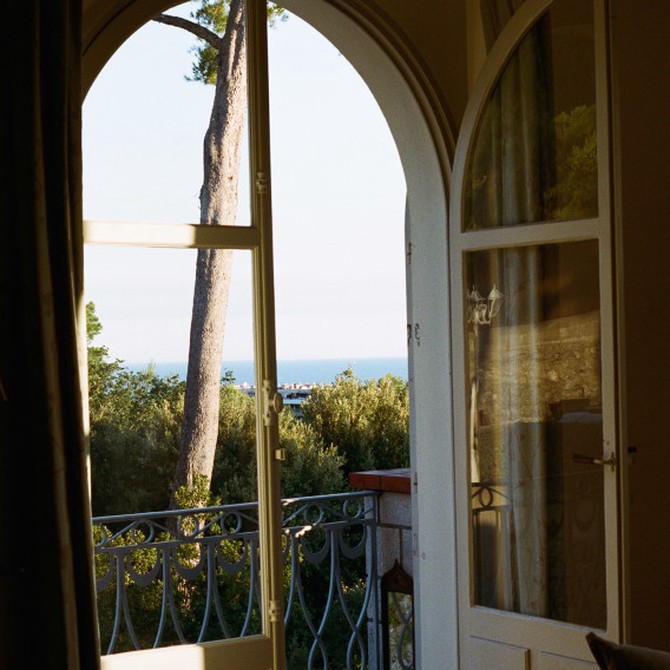
Photo: Excerpted from Wabi-Sabi Welcome by Julie Pointer Adams (Artisan Books). Copyright © 2017. Photographs by Julie Pointer Adams and Ryan J. Adams.
7. Let the Breeze Blow Through
As most of us can attest, air and sunlight completely change the way any room looks and feels—and the way we feel inside it. The French realized this early on (during the seventeenth century, in fact), which led them to invent what are now known as "French doors": glass-lined doors that usually lead out to a terrace or balcony. Letting nature freely permeate our homes can affect us in many important ways: It lifts our mood, makes our spaces feel more open, heals us faster (both physically and mentally as many studies have proven), and generally improves our all-around well-being. A wabi-sabi aesthetic is big on filtered light, so if you have too much harsh light, hang thin, gauzy curtains inside or a slatted bamboo curtain outside. Or if your space is low on light, use some well-placed mirrors to help capture and reflect whatever natural rays you do get. Likewise, if you're not regularly able to keep windows and doors open, a fan can do wonders for circulating any bit of fresh air.
7. Let the Breeze Blow Through
As most of us can attest, air and sunlight completely change the way any room looks and feels—and the way we feel inside it. The French realized this early on (during the seventeenth century, in fact), which led them to invent what are now known as "French doors": glass-lined doors that usually lead out to a terrace or balcony. Letting nature freely permeate our homes can affect us in many important ways: It lifts our mood, makes our spaces feel more open, heals us faster (both physically and mentally as many studies have proven), and generally improves our all-around well-being. A wabi-sabi aesthetic is big on filtered light, so if you have too much harsh light, hang thin, gauzy curtains inside or a slatted bamboo curtain outside. Or if your space is low on light, use some well-placed mirrors to help capture and reflect whatever natural rays you do get. Likewise, if you're not regularly able to keep windows and doors open, a fan can do wonders for circulating any bit of fresh air.
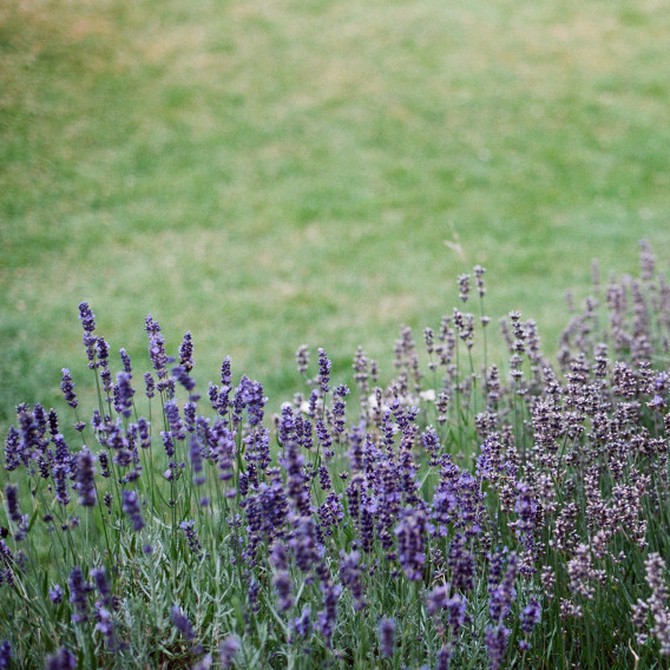
Photo: Excerpted from Wabi-Sabi Welcome by Julie Pointer Adams (Artisan Books). Copyright © 2017. Photographs by Julie Pointer Adams and Ryan J. Adams.
8. Fill Your Home with Fragrance
I've always loved the feeling of walking into a familiar place or hugging a close friend and being overwhelmed by all the good associations that come with the small, and I think this sensation can be powerfully comforting. The same idea can be infused into your home with a fragrance that exemplifies you and you want your space to feel. You can try candles, diffusers, room spray, real flowers, incents, or even just simmering water with a few drops of essential oil in it (which is one of my favorite ways to lightly infuse a space with fragrance). As with all things wabi-sabi, it's important to stick close to nature; instead of overly sweet, syrupy combinations that come entirely from a test tube, I usually gravitate toward natural occurring sing-origin smells live lavender, eucalyptus, geranium, sandalwood, vanilla, coconut, rose, cinnamon, citrus, gardenia, or other similarly earthy scents.
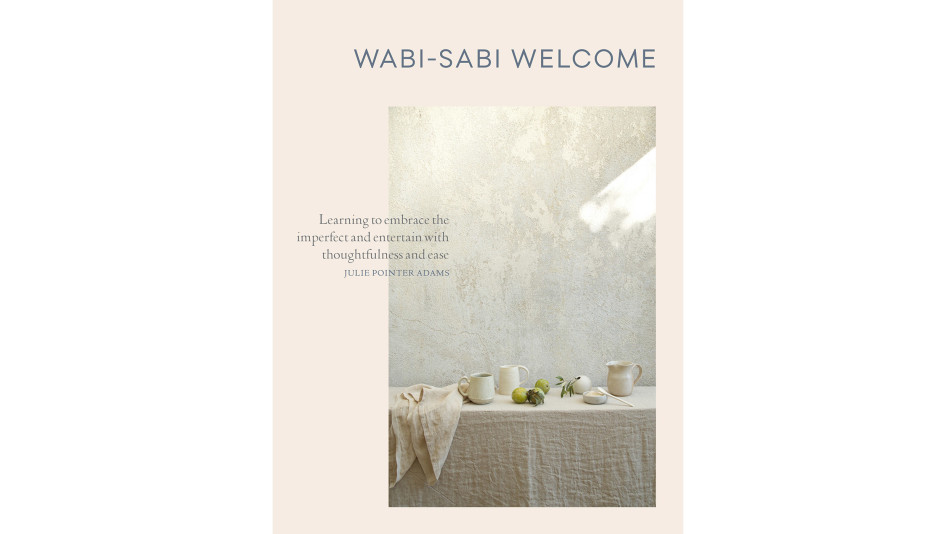
Excerpted from Wabi-Sabi Welcome by Julie Pointer Adams. Text copyright © 2017 by Julie Pointer Adams. Photographs copyright © 2017 by Julie Pointer Adams and Ryan J. Adams. Reprinted with permission by Artisan, a division of Workman Publishing Co., Inc.
8. Fill Your Home with Fragrance
I've always loved the feeling of walking into a familiar place or hugging a close friend and being overwhelmed by all the good associations that come with the small, and I think this sensation can be powerfully comforting. The same idea can be infused into your home with a fragrance that exemplifies you and you want your space to feel. You can try candles, diffusers, room spray, real flowers, incents, or even just simmering water with a few drops of essential oil in it (which is one of my favorite ways to lightly infuse a space with fragrance). As with all things wabi-sabi, it's important to stick close to nature; instead of overly sweet, syrupy combinations that come entirely from a test tube, I usually gravitate toward natural occurring sing-origin smells live lavender, eucalyptus, geranium, sandalwood, vanilla, coconut, rose, cinnamon, citrus, gardenia, or other similarly earthy scents.

Excerpted from Wabi-Sabi Welcome by Julie Pointer Adams. Text copyright © 2017 by Julie Pointer Adams. Photographs copyright © 2017 by Julie Pointer Adams and Ryan J. Adams. Reprinted with permission by Artisan, a division of Workman Publishing Co., Inc.
Published 07/12/2017

